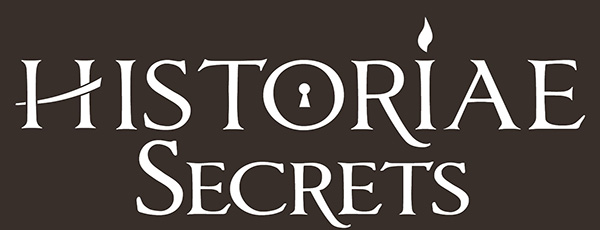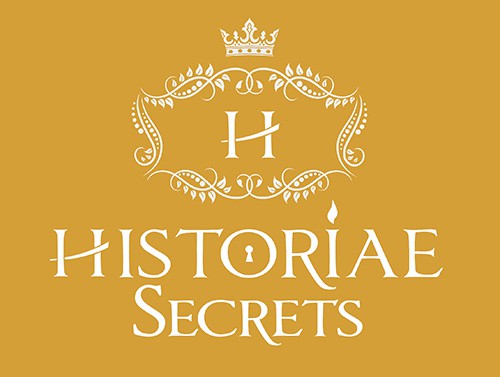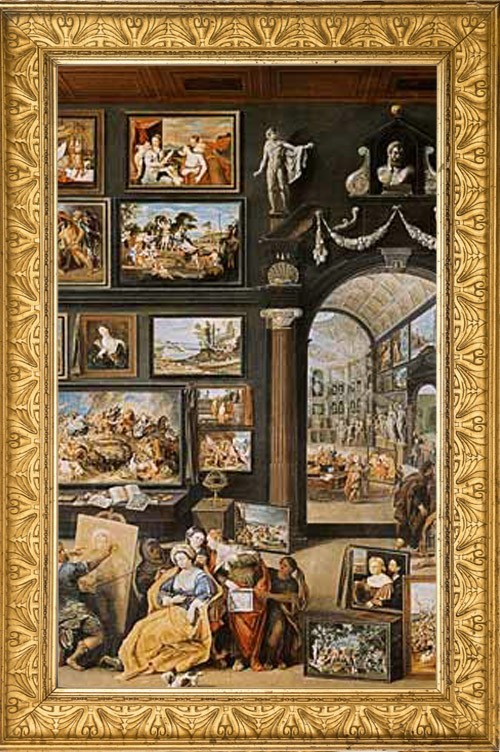Cabinets of Curiosity
The name "Cabinet" is given to a room in which a public or private collection of paintings, drawings, prints, medals, precious stones, natural history documents are exhibited.
Originally, the cabinet was a furniture with drawers in which were placed important papers and precious objects: medals, gems, jewelry. With the development of the collecti...
Originally, the cabinet was a furniture with drawers in which were placed important papers and precious objects: medals, gems, jewelry. With the development of the collecti...
The name "Cabinet" is given to a room in which a public or private collection of paintings, drawings, prints, medals, precious stones, natural history documents are exhibited.
Originally, the cabinet was a furniture with drawers in which were placed important papers and precious objects: medals, gems, jewelry. With the development of the collections, by extension, the word first designated a room, of small dimensions, where the collected objects were kept; then in the 17th and 18th centuries it was used to name both the collection and the room where the collection was stored or displayed.
The term is still used in the field of museology and refers to a room with limited dimensions, in which are exposed some elements of a collection, such as the "small cabinets" of the Louvre.
Cabinet paintings at cabinets of curiosities
Lire la suite
Originally, the cabinet was a furniture with drawers in which were placed important papers and precious objects: medals, gems, jewelry. With the development of the collections, by extension, the word first designated a room, of small dimensions, where the collected objects were kept; then in the 17th and 18th centuries it was used to name both the collection and the room where the collection was stored or displayed.
The term is still used in the field of museology and refers to a room with limited dimensions, in which are exposed some elements of a collection, such as the "small cabinets" of the Louvre.
Cabinet paintings at cabinets of curiosities
Even if from the Middle Ages, the first great collectors make their appearance (Louis of Anjou, Jean de Berry), it is only at the end of the fifteenth and the beginning of the sixteenth century that the paintings were stored in small dedicated rooms, whose access was private. They were called Amateur Cabinets or Painting Cabinets.
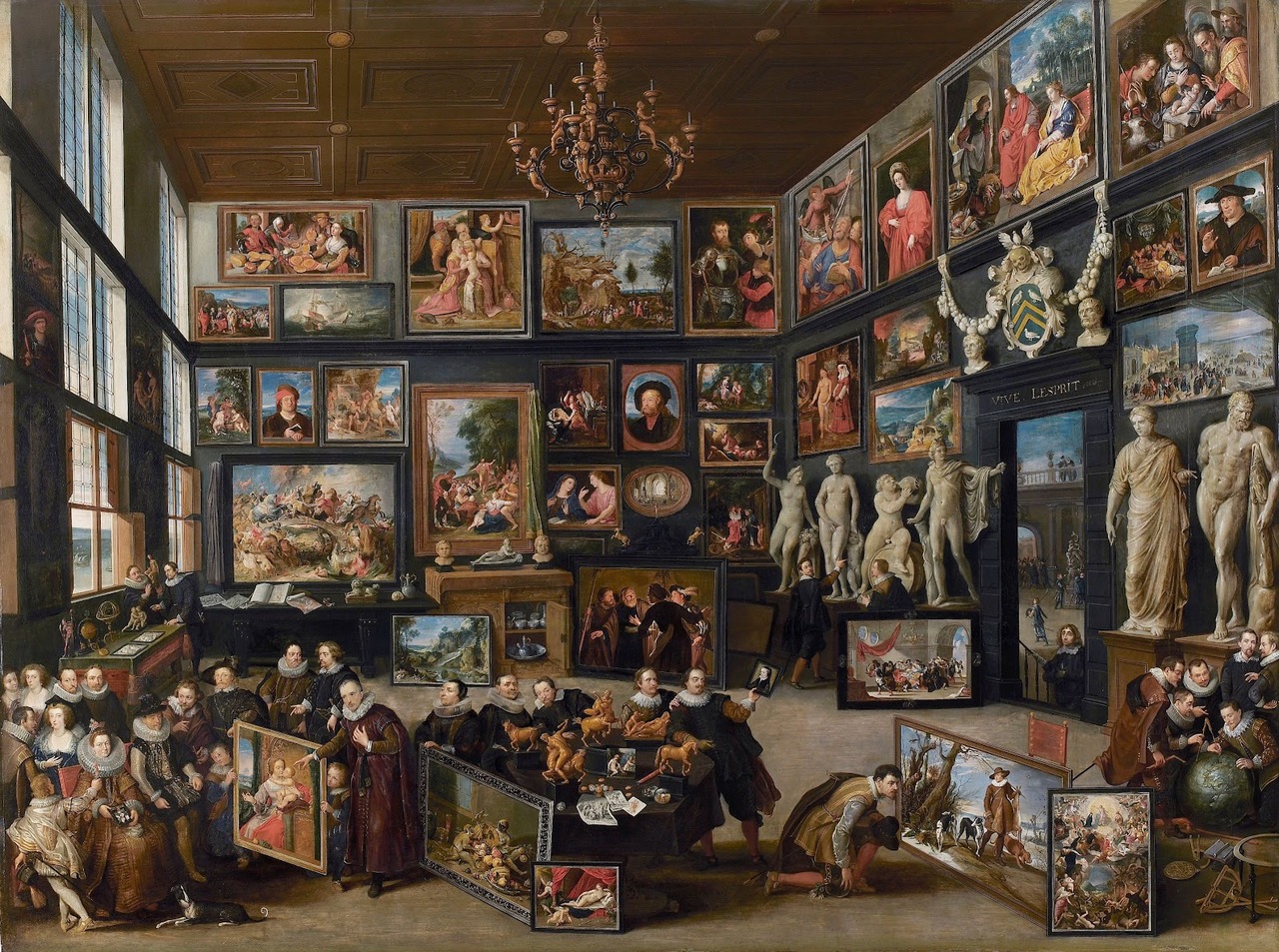
In Italy, the Italian princes had "studiolo" decorated with paintings (Frederick of Montefeltre, in Urbino, Isabella of Este, Mantua).
Later, these paintings were exhibited with other small objects of art and precious objects, including miniatures, prints, small sculptures and other curiosities of all kinds and origins. All these objects were collected in a room that was called a cabinet of curiosities.
With the development of shipping companies and expeditions, collectors discovered a taste for the original, the strange or the extraordinary and began to accumulate objects of natural history such as Egyptian mummies, dried dragon's blood, skeletons of mythical animals, that were then stored next to works of art. The cabinets of curiosity then often took the name of Chambers of Wonders.
Later, these paintings were exhibited with other small objects of art and precious objects, including miniatures, prints, small sculptures and other curiosities of all kinds and origins. All these objects were collected in a room that was called a cabinet of curiosities.
With the development of shipping companies and expeditions, collectors discovered a taste for the original, the strange or the extraordinary and began to accumulate objects of natural history such as Egyptian mummies, dried dragon's blood, skeletons of mythical animals, that were then stored next to works of art. The cabinets of curiosity then often took the name of Chambers of Wonders.
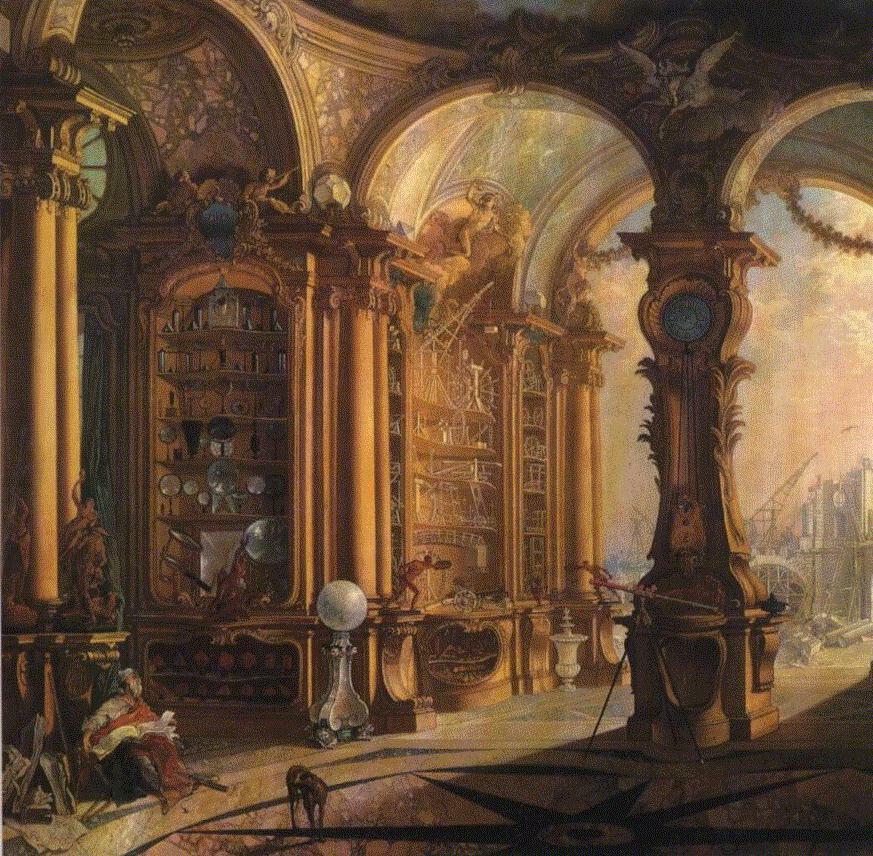
Few cabinets have survived with all their content. But those who have survived are of unparalleled interest.
Iconography:
- Willem van Haecht, Cabinet d’amateur de Cornelis van der Geest lors de la Visite des Archiducs, 1628, Rubenshuis, Antwerp
- Jacques de LAJOUE, Le cabinet de Bonnier de La Mosson, 1734, Beit Collection, Blessington, Ireland
Few cabinets have survived with all their content. But those who have survived are of unparalleled interest.
Des objets et des produits d'Art et d'Histoire associés à "Cabinets of Curiosity" seront disponibles prochainement.
Si vous souhaitez être prévenu
lorque ces objets et ces produits seront disponibles,
saisissez votre adresse email ci-dessous.
lorque ces objets et ces produits seront disponibles,
saisissez votre adresse email ci-dessous.
Votre demande a bien été enregistrée, merci.
Une erreur est survenue, veuillez vérifier votre adresse email et réessayer.
Please verify that you are not a robot.
